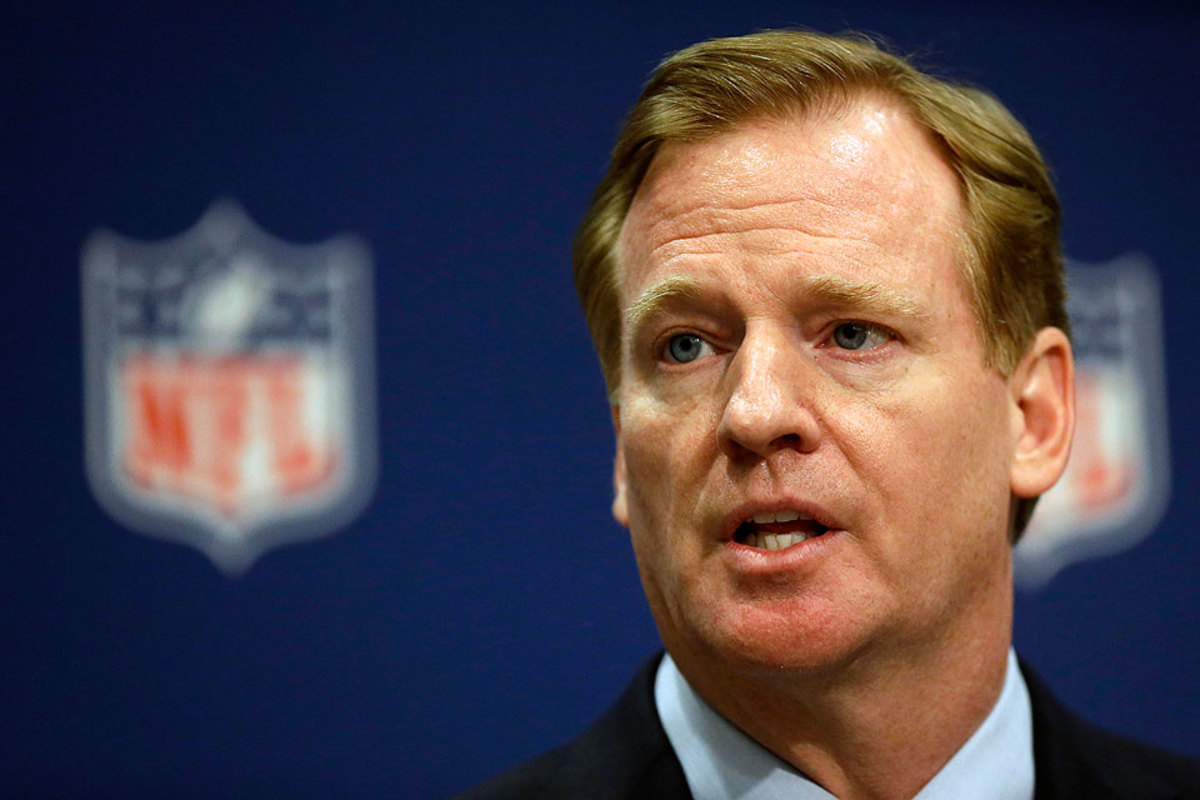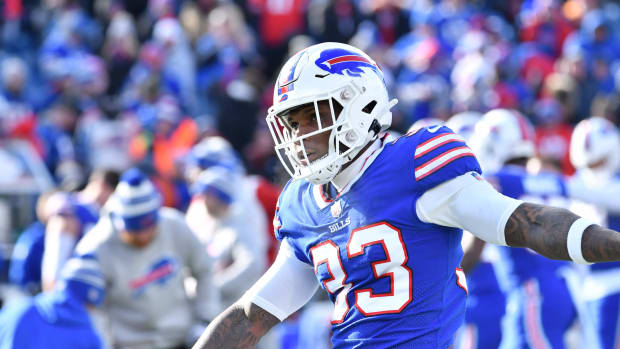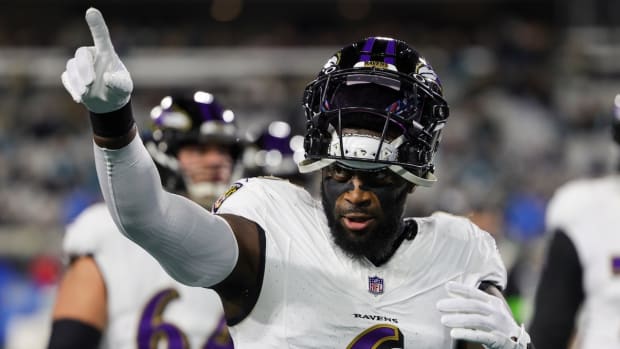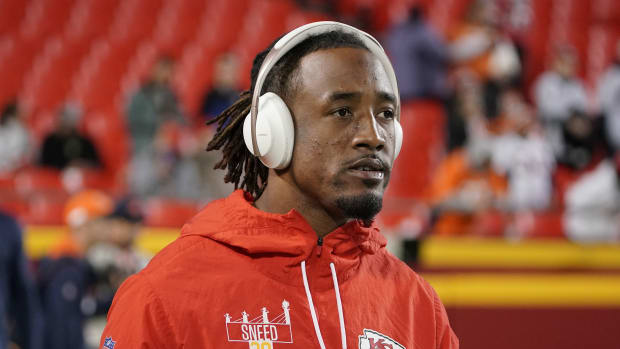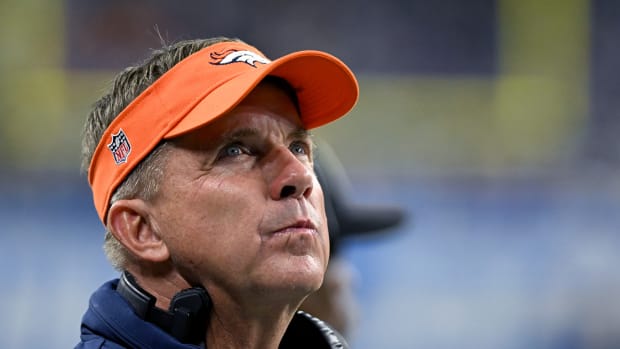A Tie’s a Win for the NFL
While away on vacation a couple weeks ago I received animated calls—within minutes of each other—from attorneys representing both the NFL and the concussion plaintiffs suing the NFL. They were informing me of revisions in the purported settlement between the two sides, one reached Aug. 29 of last year yet never advancing towards resolution. Their respective enthusiasm for the amended settlement was well placed: while the original settlement could not gain preliminary approval for almost 11 months, this revised settlement received such sanction in 11 days!
While there are still some hurdles to cross, this week's turn of events was an important step towards resolution of what I saw as a viable threat to the NFL’s continued unsurpassed prosperity.
Settling always was the clear option
Beyond the posturing on both sides of this dispute, I always thought this case would settle. From an NFL perspective, owners wanted to curb the negative publicity, remove the threat of billions of dollars of exposure, and have no admission of liability (standard in comprehensive settlements).
There has never been a better time to be an NFL owner. Team-friendly CBA, long-term TV contracts, franchise values rising over $1 billion, and now the major litigation threat for the future is being removed.
From the players’ perspective, the focus of this suit has always been the players suffering the most, the ones without the luxury of time. Without years to litigate, settlement became a clear strategy. Further, causation was a challenge for many plaintiffs. Had the case continued, NFL lawyers would depose former players about other causes of neurocognitive impairment, with prickly questions such as:
- "If you played football for 20 years and only four of them were in the NFL, aren’t you only suing them because they have the deepest pockets?”
- “What kind of lifestyle did you lead while playing? What about since you played?”
- “How much do/did you smoke or drink?”
- “What about that time you had a bike accident? Couldn’t that be a cause?”
- “What about that time you slipped on the ice? Couldn’t that be a cause?”
Settlement removed the potential for these uncomfortable interrogations into causation. As part of the settlement retired players do not need to demonstrate causation from playing football, only that they played for a certain amount of time and now have a certain level of impairment.
How Brody helped negotiations
Once settlement became the preferred option it became a negotiation, nothing more and nothing less. Plaintiffs’ lawyers certainly tried to negotiate a number in the billions but faced formidable negotiators from the NFL, and a $765 million global settlement was struck. Or so we thought.
Judge Anita Brody, aware of the magnitude of the case, demanded assurances from both sides that the figure was suitable to fund all future claims going forward 65 years. Those assurances—and whatever documentation was provided—were not enough to satisfy her.
Judge Brody thus assigned her designated financial expert, Special Master Perry Golkin, to broker an amended settlement with the major revision removing the $765 million cap (or a cap of any amount) to ensure the funding will not run dry. Also, another provision in the original settlement, denying plaintiffs the right to also sue the NCAA or other amateur organizations, was removed at Judge Brody’s urging.
Thousands of retired NFL players owe a debt of gratitude to Judge Brody; she drove this critical change in the settlement.
The importance of audit rights
The NFL, however, was also able to wrangle a “win” in the amended settlement: they can now challenge any player claim, removing the limitation on its number of challenges.
The Business Of Football
There's more to the game than what happens between the lines. Former agent and NFL executive Andrew Brandt explains the intricacies of the money side of sports regularly on The MMQB. ARCHIVE
League owners and executives have long thought that this case was lawyer-driven, with lawyers signing up many undeserving players with form contracts to drive up the numbers. And as someone who received many inquiries from former players, I admit to seeing some of that, with calls like this:
Player: “Do you think I should join that lawsuit?”
Me: “Do you have any symptoms?
Player: “No....but I might. And the lawyers say it’s all contingent, I don’t pay anything.”
Me: “Well, how do you feel about suing for something you don’t have?”
Player: “Well, the NFL got over on me and I don’t feel bad getting a little more.”
I see a lot of bitterness from many retired players about the way things ended in their career, with a sense they deserved more: more playing time, more money, more respect, etc. Unfortunately, this settlement will not answer many of those players’ issues. And the NFL’s now unlimited “audit rights” to challenge what they see as purely lawyer-driven claims is meant to ferret out frivolous claims.
(Note: even with the settlement, all players still maintain their collective bargaining agreement rights to pension plans, disability payments, 88 Plan, worker’s compensation, etc.)
There will be detractors
Even with the improvement of removing the cap on funding, there are still players upset with the amended settlement.
Seven former players, including Alan Faneca and Sean Morey, filed a formal objection to the settlement. Their complaint focuses on the “grid,” the complicated matrix formula identifying award amounts to players. As per the grid, players suffering from depression, mood changes, sleep disorders, attention deficits, etc. yet not at the stage of chronic traumatic encephalopathy (CTE) at time of settlement receive no compensation (unless deceased). Their objection is also highly critical of the lead attorneys for the plaintiffs, who are receiving $112.5 million in fees (paid by the NFL) for a case in which there was no inquiry into NFL concealment and misrepresentation.
With thousands of former players, I would expect more objections and “opt outs” of this class action to pursue their own litigations against the NFL. However, they will face the same challenges of delay and causation discussed above.
What happens now?
Now that preliminary approval has been granted—with notable swiftness—the settlement will now lurch forward with two flashpoint dates on the calendar:
Sept. 15: By this date, publication notice about the settlement terms must be given to all of the approximately 20,000 retired players through various media including: Sports Illustrated, People, Time, NFL Network, CNN.com, NFL.com, Facebook.com and Weather.com. The notice also will outline the procedures for players to opt out of the settlement. As per the settlement, notice costs of up to $4 million are paid by the NFL.
Nov. 19: This is the date of the all-important Fairness Hearing, where Judge Brody will consider objections before granting final approval sometime soon thereafter. And then, and only then, we will move toward the writing and cashing of checks.
The wheels of justice do not move swiftly.
The NFL's threat is removed
While the settlement presents the possibility of more costs to the NFL, they have to be pleased. Assuming approval, the league has prevented any admission of liability and avoided the threat of billions of dollars in exposure and legal costs.
Their initial funding requirement of $120 million—$20 million a month for six months after approval—amounts to less than $4 million per team, roughly the cost of a mid-tier free agent. Moreover, a large amount of that cost will be borne by insurance companies (although there are ongoing skirmishes with carriers trying to avoid this burden). Further funding will be on a month-to-month basis depending on approved claims.
As is often said in this space, there has never been a better time to be an NFL owner. There is a team-friendly CBA in place through 2020; record long-term broadcast contracts are now kicking in and franchise values are all near or above $1 billion (and rising). Now the major litigation threat for the future is being removed. In this case, a tie is a win for the NFL.
Thoughts on Jimmy Graham decision
Jimmy Graham recently lost an arbitration decision but still might become the highest paid tight end ever in the NFL, if he and the Saints can agree to a new contract. (Bill Haber/AP)
1. I think the arbitration decision was a referendum on the tight end position, one that contemplates a broader definition than when originally negotiated into the CBA 20 years ago. Franchise tag designations—not only for tight end/wide receiver, but also cornerback/safety, defensive end/linebacker, etc.—need to be addressed in the next CBA negotiations, if not sooner.
2. I think the power of the franchise tag cannot be overestimated; it is a truly powerful management tool. Whether this arbitration resulted in the higher or lower tag number, the tag has given leverage to the Saints in their ongoing negotiations with Graham towards a long-term deal.
3. I think the fact that coach Sean Payton testified “against” Graham is not a big deal. The offseason is business time in the NFL; both sides understand that. And although coaches can be close to players, they are clearly on the management side of the equation: they know where their bread is buttered.
4. I think the arbitrator’s references to social media—it was noted that Graham identified himself as a tight end—are a sign of the times and a cautionary tale to all players in disputes of any kind with teams. Their social media behavior is being watched. Players are taking note, such as Browns tight end Jordan Cameron, now a “Pro Bowl pass-catcher.”
5. I think this tag dispute was always a secondary concern; the real issue is a long-term deal. Similar to what happened with Drew Brees two years ago, the Saints at the deadline will offer a long-term deal that they can live with. And, after some haggling by experienced agent Jimmy Sexton, my strong belief is they will make a deal. The tag, at either number, is just a placeholder.
































